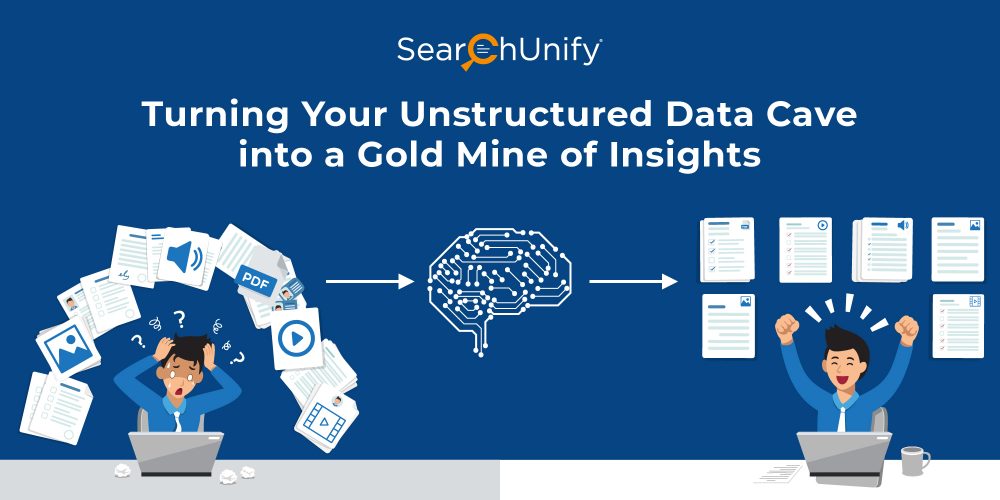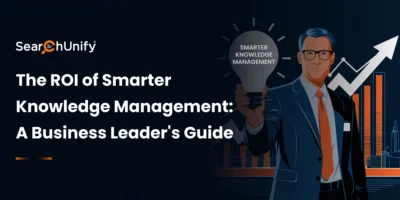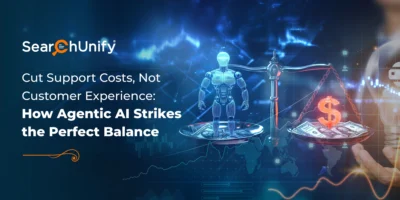
Data is undoubtedly one of the most powerful and expensive commodities. Your data contains information that can offer critical insights to validate assumptions, improve decision making, and steer towards a better future. You just need to look in the right place.
However, that isn’t easy.
Around 90 percent of an enterprise’s data is unstructured. And it is growing at 55 to 65 percent each year. To put it simply, organizations have it in abundance. Unfortunately, many businesses lack the technological component to understand it.
This means that a major chunk of the data is unutilized and incomputable. What if businesses could tap into this untouched stream of unstructured data and convert it into actionable insights? That’s what I am going to talk about today.
Understanding Unstructured Data
To understand what unstructured data is all about, you need to know a thing or two about structured data.
Structured data is usually found in relational databases (RDBMS). It may contain fields or records of fixed or variable length but is created within an RDBMS structure. Unstructured data is everything else. For starters, it isn’t managed in a transactional system.
It has an internal structure but no predefined model or schema. It may very well be human or machine-generated, and textual or non-textual. It’s so prolific because it can be anything like audio, imaging, media, sensor data, text data, and whatnot.
Challenges of Analyzing Unstructured Data
Not too long ago, taking a limited, passive approach to data and analytics was the norm. Firms would frequently apply analytical capabilities to minuscule (easy) samples of structured data siloed within a particular system or function just to generate a report.
This means unstructured data was never leveraged to make an informed decision. Structured data actively used parameters like defined fields, input restrictions, data types, etc. which made it a lot easier to enter, request, and analyze.
On the flip side, unstructured data originated from a whole gamut of sources like word processors, emails, social media, survey responses, etc. Furthermore, it was a mixed bag of text and numbers. This lead to ambiguities and irregularities that made it harder to understand.
To put it simply, we didn’t have the technical horsepower to leverage unstructured data to answer questions and discover trends or patterns. It was just unimaginable. However, that outlook has started to change.
Now, firms want to tap into every data lake for better insights. That requires including data from emails, online reviews, social media, call transcripts, CRM, and whatnot. Organizations cannot take the manual approach for this herculean task. And they won’t have to.
Cognitive Search: A Much Needed Game-Changer
We now have the technology that can help brands to collect and analyze the previously untouched unstructured data. AI and its building blocks like deep analytics, machine learning, and natural language processing can make it happen.
And that’s not the end of it. Cognitive search engines integrate AI and its subsets to help you attain data-driven decision-making supremacy from unstructured datasets. Here’s how:
1. Analyzing Complex Information
Cognitive engines offer Natural Language Processing (NLP) that analyzes unstructured text and quickly arrive at conclusions. For instance, mergers and acquisitions can be a bit tricky as they involve a sea of paperwork. And the complicated language doesn’t make it any easier.
NLP consumes such content at the speed of light. In case of any risks or other red flags, it can identify and highlight its findings, thus accelerating the legal team. Additionally, it can help with Named Entity Resolution i.e identify important concepts in the text like organization, people, places, etc. The named entities are then assigned to the right ontology for a better experience.
FUN FACT: Natural Language Generation (NLG) is an AI-powered wand that develops content in an engaging, human-like language. A far cry from the canned responses of the yesteryears, NLG allows businesses to provide automated responses that are sentiment-adaptive. Another interesting use case for NLG is compressing huge volumes of text or analytical data into pint-sized summaries for easier consumption.
2. Converting Speech Into Text
Every call with customers contains some valuable takeaways. If all these interactions are recorded and examined, organizations can uncover a goldmine of insights. However, that will require a lot of resources and time. Cognitive search offers an easier fix.
Some engines come with features like speech-to-text that can convert unstructured audio files into structured text. And once it takes the form of text, NLP springs into action to scan and identify parts that might be of interest to the enterprise.
3. Mining User Sentiment
The proliferation of touchpoints provides customers more channels to share their thoughts. This translates into an amazing opportunity for research and innovation while keeping customer’s needs in mind. But it all boils down to analyzing the ever-increasing, complex data.
Cognitive engines can help with that. With real-time sentiment analysis, businesses can not only evaluate the market sentiment but also get the opportunity to correct course in case things aren’t going well. Finally, it can pick out potential defectors along with brand advocates from the existing rooster of customers.
4. Clustering Information Sets
One of the best ways to meticulously examine something is by placing similar items together. And that’s precisely what clustering is all about. It uses machine learning to group similar content in articles, social media posts, tickets, etc.
Let’s assume a SaaS-based enterprise rolled out a version update with some new features. Naturally, the brand would be interested to see what kind of response does it get. Cognitive engines can scour their social media and online community and consolidate all the posts, queries, comments, etc. on the same.
5. Diverging All Data Rivers Into One Ocean
Data, both structured and unstructured, is scattered across a litany of platforms. To make the best data-driven decisions, organizations need to simultaneously monitor all the channels. That becomes a problem because multiple channels offer different insights.
This is where the cognitive search platform strikes again. It creates a unified index of all the content sources to facilitate quick and effortless access. The engine also creates an optimal, efficient, and non-disruptive data connection to obtain insights.
Takeaway
I cannot stress enough about unlocking the potential of your unstructured data. It packs quite a punch and offers valuable information like market analysis, user sentiment, and business intelligence. On top of that, it sniffs out errors or any possibility of failure.
Want to see how you can drive value from your unstructured data?
What’s better than using previously unutilized insights to improve and perfect your product, service, marketing, sales, and purchase experience? All you need is one cognitive stone to make it happen. Want to see cognitive engines in live action? Then request a live demo now!











